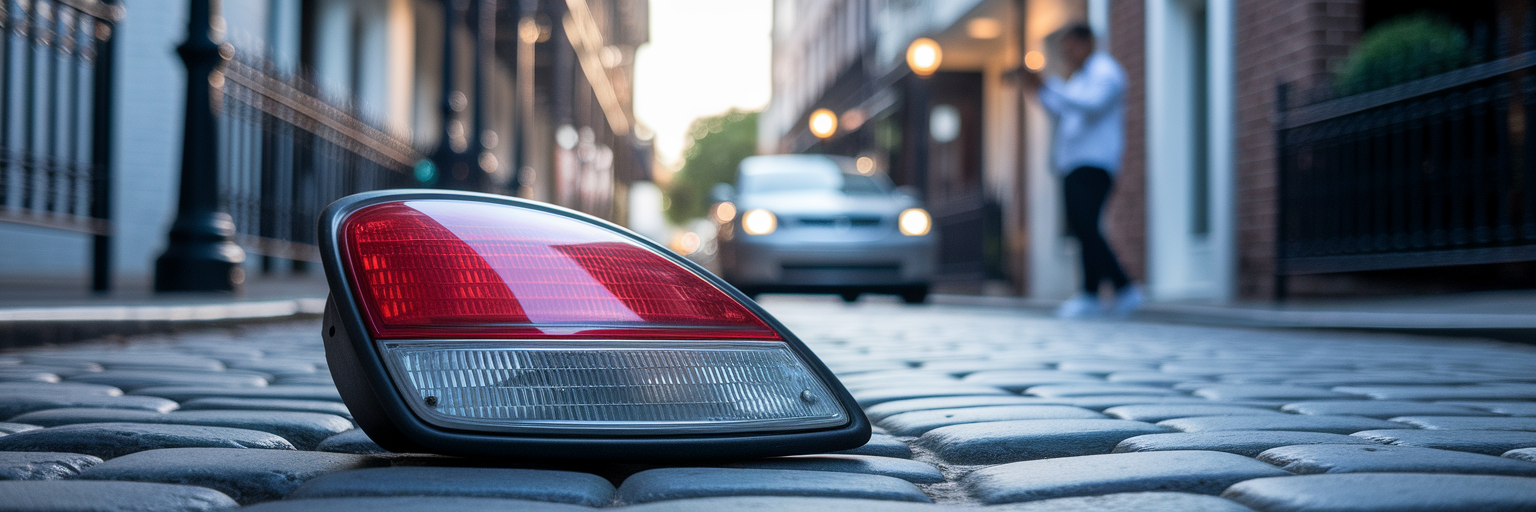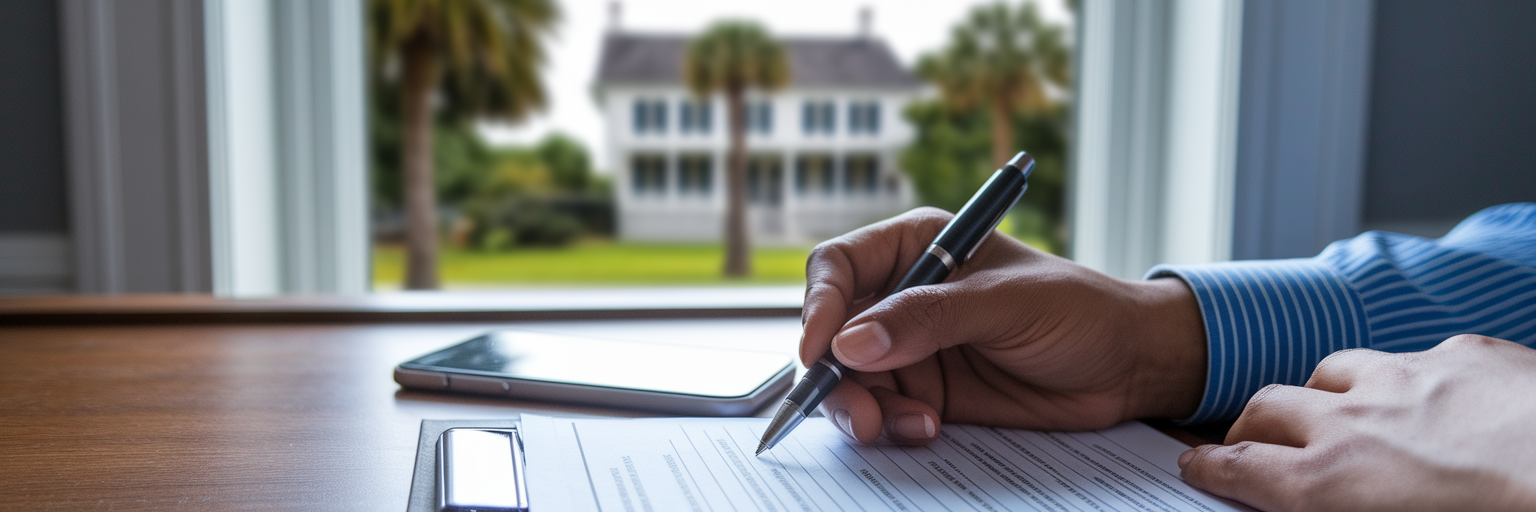The narrow, cobblestone streets of Charleston’s Historic District create a unique charm, but they also present distinct challenges for drivers. A sudden collision is jarring anywhere, but when the other driver flees the scene, it leaves you feeling shocked, angry, and unsure of what to do after a hit and run. The moments that follow are critical for your safety and for any future claim.
Immediate Actions at the Accident Scene
The sound of impact followed by the sight of a car speeding away can send adrenaline surging through you. Your first priority is not the fleeing driver, but your own well being. On Charleston’s tight streets, like Chalmers or Queen Street, a disabled vehicle can create a secondary hazard almost instantly. You must act methodically to secure the scene and yourself.
Follow these steps immediately:
- Prioritize Safety First. Before anything else, check yourself for injuries. If you are hurt, call 911 right away. If you are able and it is safe to do so, move your vehicle to the side of the road to avoid blocking traffic. Your personal safety is more important than preserving the exact crash location at this initial stage.
- Check on Your Passengers. Adrenaline can easily mask pain. Check on everyone in your car. Even seemingly minor soreness can signify a more significant issue, which is a key reason to understand your rights after any crash resulting in a personal injury.
- Report the Hit-and-Run. Call 911 to report the incident to the Charleston Police Department. Be as specific as possible with your location. Instead of just a street name, use landmarks like “near the Pineapple Fountain” or “on Meeting Street by The Mills House” to help officers find you quickly.
- Do Not Pursue the Other Driver. It is tempting to chase the person who hit you, but you must resist this urge. Pursuing them puts you at risk of another downtown car accident or a dangerous confrontation. Let the police handle the pursuit.
Gathering Evidence in the Historic District
Once you have addressed any immediate safety concerns and called for help, your focus can shift to documenting what happened. The evidence you collect in these moments is the foundation for your police report and insurance claim. In a busy area like the Historic District, clues are often hiding in plain sight, but they can disappear quickly.
Here is what you should look for:
- Vehicle Details: Write down every detail you can remember about the other car. This includes its make, model, color, and any unique features like a dent, a roof rack, or bumper stickers. Even a partial license plate number can be incredibly useful for investigators.
- Photographic Proof: Use your phone to take extensive photos and videos. Capture the damage to your car from multiple angles, any debris left behind like paint chips or broken plastic, and skid marks on the road. Also, take wide shots of the intersection to show the full context of the scene.
- Eyewitnesses: Look around for anyone who might have seen the collision. In downtown Charleston, this could be tourists near the City Market or diners at an outdoor cafe on King Street. Politely ask for their names and phone numbers. An independent witness can be a powerful asset.
- Surveillance Cameras: Scan the area for nearby security cameras. Note the names and addresses of businesses with cameras pointed toward the street, or look for doorbell cameras on nearby residences. This footage is often the key to a successful effort to report hit and run Charleston SC.
| Evidence Type | What to Collect | Why It’s Important |
|---|---|---|
| Fleeing Vehicle Information | Make, model, color, license plate (even partial), distinguishing marks (dents, stickers) | Provides law enforcement with critical leads to identify the driver. |
| Scene Photographs | Damage to your car, debris, skid marks, street signs, surrounding area | Creates a visual record of the incident, proving the location and severity. |
| Eyewitness Information | Names, phone numbers, and a brief summary of what they saw | Provides third-party corroboration of your account for police and insurers. |
| Nearby Camera Locations | Addresses of businesses or homes with visible security or doorbell cameras | Footage can provide conclusive proof of the other vehicle’s identity and actions. |
Filing an Official Police Report
While the 911 call starts the process, the official police report is the document that formalizes your case. When Charleston police officers arrive, provide them with all the evidence you have gathered. Recount the facts calmly and clearly, but avoid speculating about things you are unsure of or admitting any fault. Your job is to provide information, not to draw conclusions.
Make sure you get a police report number before the officer leaves the scene. This report is the cornerstone of any insurance claim or legal action. Without it, securing hit and run compensation South Carolina becomes nearly impossible. This official document is what triggers a formal investigation. As noted in reports on hit-and-run investigations, this includes documenting the scene and interviewing witnesses to help identify the fleeing driver. Once law enforcement arrives, they begin gathering evidence to build their case. While the police handle the criminal investigation, understanding your civil options is a separate but equally important step. Our firm provides resources to help you understand the path forward.
Navigating Your Insurance Claim
After dealing with the immediate aftermath and the police, your next call should be to your own insurance company. Many people worry they will be found at fault, but in a hit-and-run, your claim is typically handled through your Uninsured Motorist (UM) coverage. This coverage is specifically designed for situations where the at-fault driver is unidentified or uninsured.
In South Carolina, UM coverage is mandatory unless you have specifically rejected it in writing. However, policy limits can vary significantly. It is a good idea to review your policy to understand your coverage amounts for both property damage and bodily injury. This information will determine the maximum compensation you can receive from your own insurer.
When you speak with your insurance company, document every interaction. Keep a log of the names of agents you speak with, the dates of the calls, and a summary of what was discussed. This record can protect you if disputes arise or if the insurer makes an unfairly low settlement offer. If you have questions about your policy or are unsure how to proceed with your claim, it is best to seek guidance. You can reach out to our team for a consultation to discuss your situation.
Why Legal Guidance Is Crucial
Even when you are not at fault, dealing with insurance companies can be a frustrating process. An experienced Charleston hit-and-run lawyer acts as your advocate, managing the complex negotiations and protecting you from lowball settlement offers from your own insurer. Their role goes far beyond just paperwork.
A skilled attorney can launch an independent investigation to identify the fleeing driver. This includes subpoenaing surveillance footage from businesses or traffic cameras, a power that an individual does not have. If the driver is found, your lawyer can pursue a claim against their insurance or file a lawsuit directly against them. It’s important to know that South Carolina imposes severe penalties for leaving the scene of an accident. As highlighted by Armada Law, if the crash results in death, the consequences are extreme, with potential prison sentences of up to 25 years.
Most importantly, a lawyer ensures all your damages are properly calculated and pursued. This includes not only your medical bills and vehicle repairs but also lost wages and the pain and suffering you have endured. An experienced attorney will build a comprehensive case to maximize your compensation. To learn more about how legal experts handle these specific incidents, you can consult with experienced Charleston car accident lawyers who understand the nuances of hit-and-run cases.


